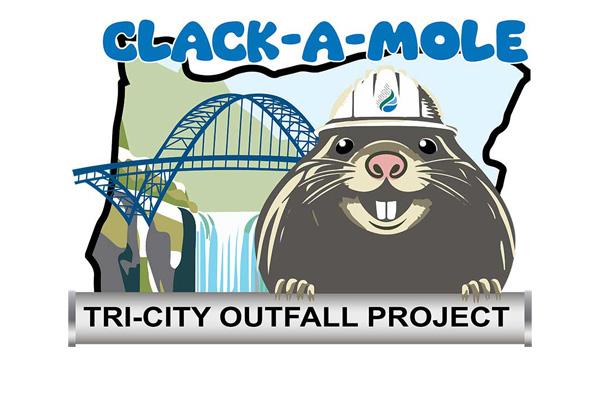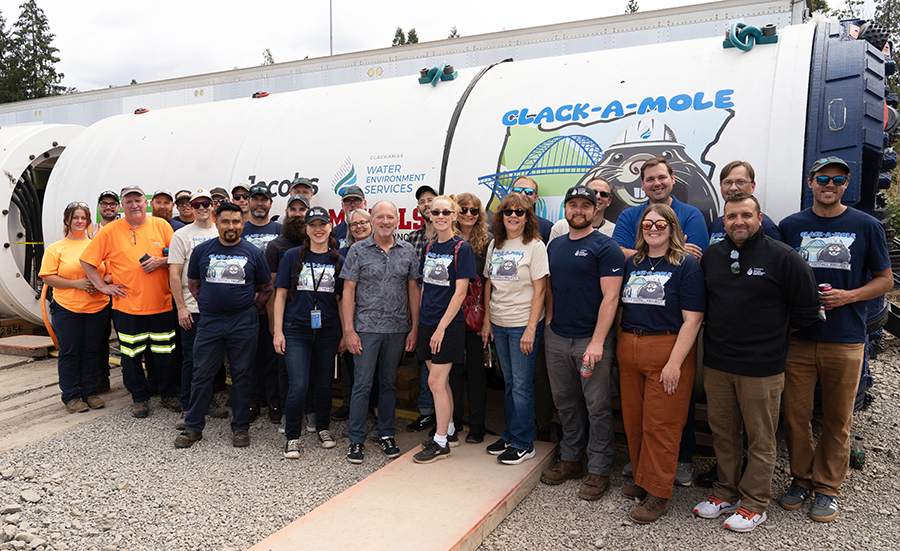OREGON CITY, Or. -- Clackamas Water Environment Services (WES) retrieved from the Willamette River on Tuesday, Jan. 28, a 250,000-pound machine used to produce a new outfall pipeline.
WES officials lifted The Clack-A-Mole Tunnel Boring Machine (TBM) out of the water after it was submerged for more than seven months. During that time, the TBM drilled a ½-milelong, nine-foot-diameter tunnel to construct a new outfall pipeline to transport treated water from the Tri-City Water Resource Recovery Facility in Oregon City to the Willamette River. The treated water, called “effluent,” is then sent to the Willamette River. An outfall is the discharge point where the treated water flows into the river. This is one of the last steps in a significant infrastructure project that is needed to accommodate growth.
"Without this type of infrastructure, we're not able to provide the necessary services to homeowners, and we're not able to build so that people have a place to live," shared Martha Schrader, Clackamas County Commissioner.
“In all of my years in the industry,” shared WES Director Greg Geist, “the outfall project and subsequent retrieval of the tunnel boring machine from deep in the Willamette River is one of the biggest and most impressive engineering accomplishments I’ve had the pleasure to witness. I’m extremely proud of Jeff Stallard, our Capital Program Manager, and our entire engineering team.”
Every day, WES cleans more than 10 million gallons of wastewater at its Tri-City Water Resource Recovery Facility in Oregon City.
Built in 1984, the current outfall is nearing capacity during peak wet weather events. The replacement outfall will be large enough to provide service for decades. Operation of the outfall is expected to begin in 2025.
TBMs are typically named, and WES offered the community the opportunity to make suggestions. After receiving more than 650 naming suggestions, the Board of County Commissioners selected “Clack-A-Mole” as the winning submission. Submissions came from residents from every community in Clackamas County and as far as Pensacola, Fla.
 Translate
Translate







